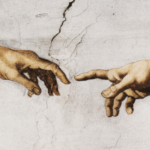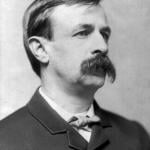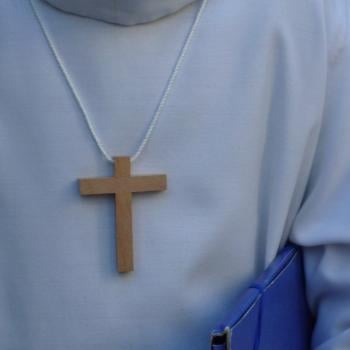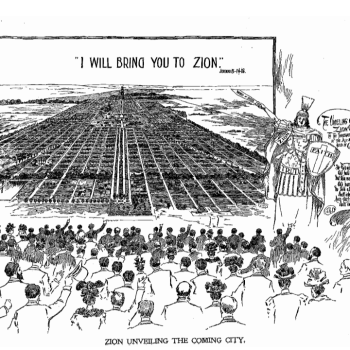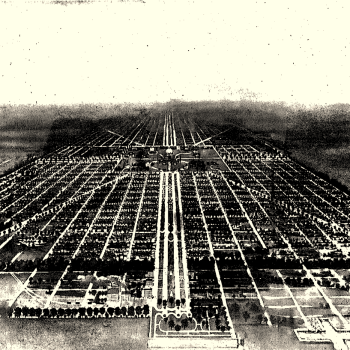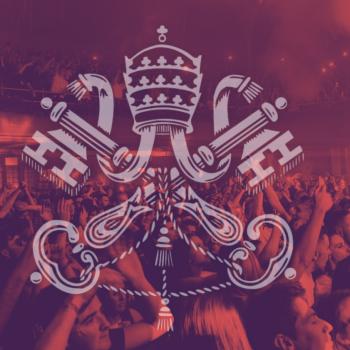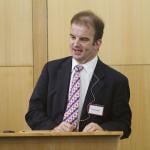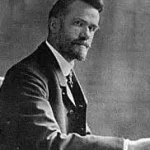One of the biggest stories in 20th-century religious history is the rapid rise of Pentecostal and Charismatic Christianity around the world. By the World Christian Database’s estimate, almost 1 in 3 Christians around the world can be identified as Pentecostal or Charismatic. Other scholars, like Joel Cabrita and David Maxwell have pointed out that the birth of world Christianity is intimately intertwined with the spread of this fervent form of faith. Today, Pentecostal and Charismatic groups have a world fellowship, participate in ecumenical bodies, and show continued growth rates around the world. This is not to mention the vast number of tomes being written about these groups every year.
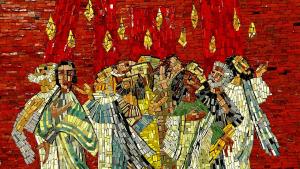
Most religious historians know this big picture story… or at least we think we do. As a recent commenter to one of my posts pointed out (Thanks, Terry!), the narrative of Pentecostal ascendency—and even its origins—is not as cut and dry as we like to imagine. At the risk of being passé, I’d like to revisit the story of the origins and growth of the Pentecostal movement, and to help explain why it’s not as simple as many like to think.
That Old Nut, The Pentecostal Origins Debate
Pentecostals have always told stories about themselves, but religious historians did not really begin telling the Pentecostal story until around the 1970s, when the Charismatic Renewal began sweeping through a good part of the Western world. Unsurprisingly, some of the first historians of the movement were its sons and daughters, people like Walter J. Hollenweger and H. Vinson Synan. Raised in Pentecostal churches but trained in secular universities, these new scholars provided denominational and ecumenical histories of the movement, as well as in-depth, critical biographies of major figures.
Earlier traditions among white Pentecostals tended to point toward Charles Fox Parham’s Topeka Outpouring of 1904 as the genesis of the movement. However, this new crop of historians shifted the narrative to focus on the Azusa Street Revival in 1906, an interracial revival in Los Angeles led by a black minister named William Seymour. From there, the story goes, the movement spread around the world and birthed what we call today many of the “classical Pentecostal” denominations. As Hollenweger hyperbolically claimed, “two worldwide Christian movements were founded by non-Europeans. One is the global Pentecostal movement, the other is Christianity.”
By the 1960s and 1970s, ecumenical outreach and literature by Pentecostals began producing fruit as leaders in mainline denominations began embracing Pentecostal theology and experiencing charismatic gifts, such as tongues, healing, and words of knowledge. Similarly, in 1967, a catholic student group at Duquesne University experienced the Baptism in the Holy Spirit after reading David Wilkerson’s The Cross and the Switchblade. Dubbed the Charismatic Renewal today, the movement quickly outpaced the size of classical Pentecostal denominations. Today, if you put all the world’s Pentecostals and Charismatics into a bag and pulled one out, you’d likely pull out a Catholic believer.
Finally, around the end of the 1980s and 1990s, a new brand of Pentecostal and Charismatic faith was spreading thanks to independent televangelists like Kenneth Hagin and Jim Bakker. Creating vast media networks, such preachers pushed Charismatic practices while tying them to the American dream. Promising prosperity for those who had enough faith, they encouraged a new crop of media-savvy entrepreneurs to set out on their own with the gospel of health and wealth. These Neo-Pentecostals—as they were dubbed—soon became commonplace in cities around the globe.
This tight and tidy, three-part historiography is referred to as the wave thesis, and was first suggested by David Barrett in 1988. It has become ubiquitous throughout Pentecostal studies, and its framework is virtually universal, even when the schema is being attacked or addended. And it has been under attack for some time.
Cracking the Old Nut, or What’s in a Name?
By the early 2000s, scholars outside the United States began pointing out the American-centric nature of the narrative that perpetuated a West-to-the-rest pattern. Critics, like Allan Anderson, argued for a polycentric origin for early Pentecostalism, noting the cross-pollination of ideas and people from a host of revivals that occurred virtually simultaneously. If Pentecostalism had a beginning, they argued, then Azusa should not be mentioned without the Mukti Revival of 1904, the Welsh Revival of 1904, or the Pyeongyang Revival of 1907, and a whole host of other smaller, less well-known revivals to boot.
Among Pentecostal scholars today, the polycentric critique largely stands alongside the wave thesis as generally acceptable, though there is a notable strain of disunity as Black Pentecostal scholars, like Estrelda Alexander, are quick to point out the way this new polycentric narrative downplays the influence of African American leaders and spirituality on the global movement.
For the most part, this is where the narrative has stood for the greater part of two decades, but I there has been growing discontent with the tidiness of this narrative among many scholars. For scholars of American Religious history, the easy divisions between religious groups and movements are far too uncritical. As Dale Coulter has begun arguing, the growth of charismatics in the 1960s and 1970s should not be conflated with the Charismatic Renewal movement, and one must look to the parallel tradition of healing evangelists and Pentecostal engagement with evangelicalism to explain the growth of charismatic Christianity. In the trans-Atlantic context, John Maiden has argued that the global spread of the Charismatic renewal should be linked to the broader trends of secularization, cosmopolitanism, and a culture of authenticity in the West.
Outside of the West, things can be even more complicated. For example, one of the largest segments of Charismatic Christianity in South Africa draws direct historical linkages to healing evangelist Alexander Dowie, a figure who predates any of the above timelines—and is sometimes labeled a “proto-Pentecostal,” whatever that means. In China, few groups identify as “pentecostal,” wuxunjie pai [五旬节派], though a few more might claim they are part of the “spiritual gifts group,” ling’en pai [灵恩派]. Despite this difficulty with naming conventions, many observers note that much of Christianity in China looks charismatic. Similarly, most Latin Americans who identify as evangelico or nacido de nuevo are generally classified as Pentecostal or Charismatic.
Likewise, I have not even mentioned the growing divergence and breakdown of distinctions over the last few decades. Classical Pentecostals are imbibing Neo-Pentecostal preaching on the regular. Liturgical Pentecostals are putting on robes and embracing high church practices. Independent Charismatics say they are part of the New Apostolic Reformation and are calling themselves Apostles. Simply put, the narrative is—and always has been—more complicated.
This plurality of identity and nomenclature has sometimes siloed scholarly discussions of the movement, with theologians preferring certain definitions, sociologists others, and historians still others. Responding to this, Allan Anderson suggested a much simpler “family resemblance” theory, defining Pentecostalism as the body of churches which “emphasize the working of the Holy Spirit” and that share similar practices and beliefs around more charismatic manifestations of the Spirit. While some might consider it too inclusive a definition, it helpfully pushed Pentecostal Studies beyond debates that resulted in the over-classification of the movement. Still, the various classifications and terminologies remain in place and continue to appear throughout the literature.
Why is Doing Pentecostal History so Hard?
If you are a member of the historical guild, you are no doubt reading this and being drawn backwards into the memory of the last literature review you wrote or the last head-scratching, hot-blooded debate that broke out at your conference of choice. Historians like to slice and dice and categorize movements to better understand them, and it is natural for historical frameworks and theses to be challenged and shift over time as people debate the relevance of categories in previous histories. Fights over history happen. This is normal, and Pentecostal history is no different.
While the fervor over these disagreements can be startling to some and befuddling to others, the perennial interest in such questions should not be surprising because so many debates about Pentecostal history are simply arguments by proxy. Beyond the question of origins are often far deeper and far more personal ones.
Is Pentecostalism an egalitarian product of global faith or a West-to-the-Rest American export? Is Pentecostalism about trusting in the Spirit or believing for prosperity? Is Pentecostalism losing its way because of entanglements with evangelicals, or have Pentecostals redefined what evangelicalism is? Is Pentecostalism growing because of the social disruptions caused by the flows of international capital or because it answers the deep longings of the heart?
These out-of-sight questions lie just behind the scholarly debates about Pentecostalism. Why? Because these sorts of questions lie behind almost any interesting and important historical question. Doing history is hard because we are bound to it. Our identities, values, and longings are an integral part of the process.
Religious history, perhaps better than other forms of history, helps us feel that bond, that dilemma, in a pressing and sometimes existential way. We have to grapple with them, with ourselves, and hopefully tell a true story in the process.
At least, that’s what doing Pentecostal history is about for me.


